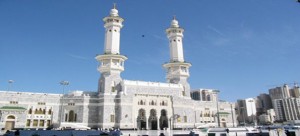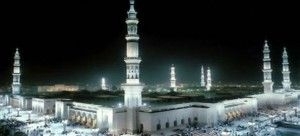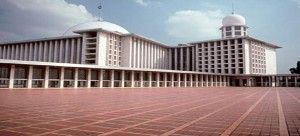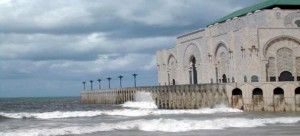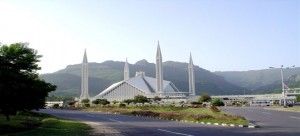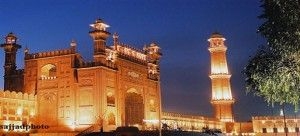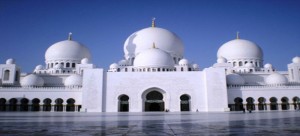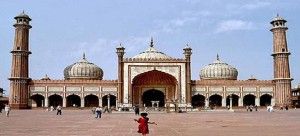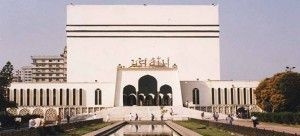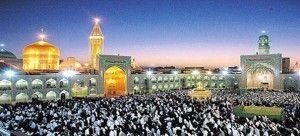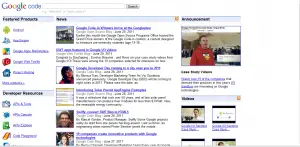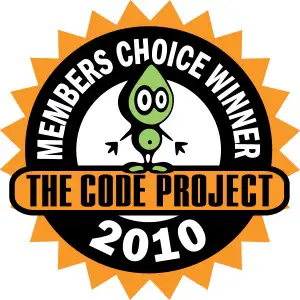Wednesday, November 16, 2011
Jobs in Pakistan
Friday, August 12, 2011
TOP 10 EDUCATIONAL KIDS WEB SITES
Kids.gov
Easy-to-navigate and most comprehensive children's portal designed for K-12. Offers categorized, reviewed and annotated links to a variety of respected educational, commercial and fun learning sites. A sampling of topics includes careers, music, fun stuff, computers, homework, money, and health. BrainPop
An award-winning educational kids' web site designed for both home and school use. Practical content spanning Science, Math, English, Social Studies, Health, Arts and Music, and Technology. Useful skills from writing a business letter to learning about dyslexia are provided. Free trial is available.
FEKids and Fact Monster
FEKids and Fact Monster are part of the Family Education Network. Kids start with a fun interface with a plethora of homework help behind it, including Fact Monster, and fun learning games for kids K-8th. Another focus is kids' issues, such as family, friends, and changing anatomy. Scholastic.com
Well-known educational products for home and teacher/homeschooler use. Find books, test prep, and activities such as the The Magic School Bus. Parents can find useful information among forums, articles and education blogs. Site is home of the Homework Hub, a free kid site.
PBS Kids
One of the easiest-to-use, educational kids' web sites where kids learn by having fun. Many games and activities are centered on favorite PBS TV shows, such as Arthur, Zoom, News Flash Five, and tools, such as The Democracy Project. Mastermind Toys
There is an enormous collection of both fun and educational products for children here, from Bob the Builder to V-Tech, dollhouses to magic sets. Find respected brands, including Mindgear and Quercetti and toys in the media. Shop by brand, age or category.
Ask for Kids
Kids-safe search engine powerful enough to handle the most difficult homework questions. Useful tools and categories included, such as biographies, math-help, world atlas, dictionary, almanac, and clip-art as well as games and news. Discovery Kids Store
For science this is the place to go, but you'll also find items such as Ready Set Learn!, arts and crafts, and books, such as Oh, Yuck!. Find award-winning toys and games. Browse the best-sellers and exclusives.
Federal Resources for Educational Excellence
FREE makes it easier to find educational resources with a centralized site of more than 1,500 learning resources, from dozens of federal agencies. Begin your search with the Subject Map, Special Collections or search by topic. AOL Study Buddy
Study Buddy is a free homework search engine that is integrated with premium learning services available by subscription, including Step-by-Step Math, Writing Wizard, Ready Set Read, and the AOL Family Library. Free trials are available.
MSN Encarta
This leading educational program offers encyclopedic information and many learning tools in one place including, homework help, top-ten lists, quizzes, and an extensive multimedia center. Site offers a useful collection of articles for parents and students. The Learning Company
The Learning Company is an international leader in educational software for kids, offering multimedia programs, workbooks, and flashcards spanning preschool to college prep material. Search for products based on essential skills sets, age/grade and subject matter.
NY Times Learning Network
Get your kids interested in news, reporting, writing, vocabulary, and understanding world events. Kids can submit letters to the editor, ask reporters questions, learn new words and sharpen their skills with crossword puzzles and quizzes. HomeSchoolingSupply.com
A small sampling of subjects on this site includes bible studies, Charlotte Mason, electronic learning, critical thinking, wooden toys, educational play, literature, science, music, microscopes and kindergarten resources.
NASA for Kids
What kid would not enjoy learning from this stunning site? Games, activities, stories, and a kid's club, along with space videos, are just some of the offerings. How about making a space shuttle out of a hot dog? UpToTen.com
Four million visitors a month to this educational kids' web site and it's easy to see why, with over 1000 learning games, over 800 free. Premium members receive ad-free service, can be part of a TV series, enjoy improved selection and contest offerings.
National Geographic Kids
From preschool to preteen, this leading educational kids web site provides both online and offline fun. Unique activities, such as create a motion ocean or make a fortune cookie. Learn from, animal videos, games, fun science, and more. Try the sitemap to view all the areas. EdHelper.com
Created by a team of teachers, this site offers educational worksheets, reading material, tests, and activities for K-12. Topics include Phonics, Foreign Language Reading Comprehension, Social Studies, Science, Math, Special Education, Test Prep and more. Yearly membership runs $19.99 and up.
CoolMathForKids.com
If a fun and easier way to learn math exits, this is the site. Kids from 3 to 100 will find lessons, study tips, games, puzzles, and explanations that make sense! Special selections for preschooler math through pre-calculus. How about the geometry of crop circles? Encyclopedia Britannica Store
Leading provider and trusted source of learning products, this educational site offers a "just for kids" store with a variety of encyclopedias, dictionaries, multimedia programs, DVDs, learning games, and even a talking globe. Check out the sale items.
Top 10 Educational Websites for Kids
- Exploratorium. The physical Exploratorium is housed inside San Francisco’s Palace of Fine Arts and was founded by Dr. Frank Oppenheimer; the web version sprawls over 18,000 pages and hundreds of scientific subjects. A kid could get (wonderfully) lost without every having to leave her desk.
- Starfall. This site is all about helping kids learn to read, with everything from the ABC basics to Chinese fables and Greek mythology for those who already know their way around a book by themselves. Its phonics foundation helps kids learn how to recognize sounds and eventually figure out words on their own.
- The Kidz Page. A portal to a plethora of games, coloring pages, puzzles and more. The free games are in two categories, educational and "regular," but to be honest, the educational ones are far more interesting. Math puzzles, baby-face Sudoku (with faces instead of numbers), word searches, and "spot-the-difference" games are challenging and fun for youger kids.
- Funbrain. Kids learn most easily when they’re playing, which is one reason why Funbrain is popular with parents and teachers alike. The teacher’s page directs you to practical things like flash cards and curriculum guides, but parents who are looking to give their children a more casual learning experience can head right on over to the free games section.
- Enchanted Learning. Enchanted Learning offers easy-to-digest printables for preschoolers and kindergarteners, as well as plenty of craft ideas tucked in among the lessons. The picture dictionaries are especially cool for budding linguists.
- Nick Jr. It may seem strange to think of TV's Nick Jr. as educational, but there's more to learning than reading, writing, and arithmatic. The games here sharpen language recognition, hand-eye coordination, sorting and organizational concepts, and puzzle- and problem-solving skills using characters and ideas your preschoolers probably recognize.
- Kids Know It. This site allows kids to explore a number of subjects, from human biology to spelling to astronomy; there's also a database of free, downloadable songs in MP3 format to help kids reinforce what the kids are learning. The site's animal database is a great virtual trip to the zoo!
- Zula Patrol. This site seems more game-oriented than educational, but don’t be fooled — there’s some serious learning going on here. The science and astronomy-focused program is geared towards kids from Pre-K to 2nd grade.
- PBSkids. Tying in to Public Broadcasting classics like “Sesame Street” and “Arthur” as well as newer educational programs like “Word Girl” and “Super Why,” PBSkids.org offers games that are so much fun, little kids won’t even notice they’re learning.
- Scholastic. There so much here that it's hard to know where to start. Scholastic has compiled an amazing teacher's resource that parents can also use for free, with subjects and lessons geared for everyone from pre-kindergarteners all the way through 12th graders. Browse by grade and subject, and be sure to check out the red-starred offerings.
Top 10 Romantic Movies
Check out where Vanessa Hudgens, some indie rock kids and a tortured, love-sick vampire sit on Kidzworld's list of Top 10 Romantic Movies

#10. Bandslam
Charlotte wants to challenge her ex in the battle of the bands so she asks Will, the new kid in town, to help manage the band. Vanessa Hudgens also stars as the cute lead singer who falls for Will. It’s worth watching just to see rock icon David Bowie in a short cameo as himself.

#9. The Proposal
Sandra Bullock stars as a hardnosed book editor who’s hated by her entire staff. When she finds out she’s being deported to Canada, she forces her assistant Andrew (played by Ryan Reynolds) to marry her. But what starts out as a business deal, turns into a genuine romance when the two are forced to spend the weekend with Andrew’s family.
#8. Across The Universe
This musical is loosely tied around the stories taken from more than 30 Beatles songs. The plot revolves around Jude (named after the character from Hey Jude) and Lucy (Lucy In The Sky With Diamonds) who move to New York City to pursue their artistic dreams.

#7. The Notebook
Ryan Gosling and Rachel McAdams star in this tear-jerker about first love. Allie and Noah meet at a carnival and fall madly in love. But, Allie's rich family doesn't approve of poor Noah and forces them apart. The Notebook is definitely a flick that you have to watch with a box of Kleenex at your side.
#6. A Walk To Remember
In this Nicholas Spark novel-turned-movie Mandy Moore plays a girl with leukemia whose life drastically changes when she meets a boy who is her exact opposite, and warns him not to fall in love with her.
#5. (500) Days Of Summer
Tom meets the girls of his dreams but Summer makes it clear that she doesn’t believe in true love and doesn’t want Tom as her boyfriend. A brokenhearted Tom then spends his remaining summer days obsessing over Summer.

#4. Adventureland
After graduating from college, James get stuck working a lame summer job at Adventureland—the local amusement park in his hometown. It’s there that he meets and falls for Em (Kristen Stewart), a disillusioned girl who’s caught up with a married guy (played by Ryan Reynolds).

#3. Nick & Norah's Infinite Playlist
Nick (Michael Cera) and Norah (Kat Dennings) have nothing in common except for a predilection toward indie rock, but with New York City as their backdrop and a killer playlist on their iPods, these two music fiends soon find themselves accidentally in love in one of the greatest cities in the world.

#2. Love Actually
This smart romcom follows more than ten couples as they navigate the various forms of love. The British Prime Minister (Hugh Grant) falls for a sweet member of his housestaff, an eleven-year-old boy is convinced he knows what love is, a heartbroken writer falls in love with his kind, Portuguese housekeeper and a wedding video reveals that the groom’s best man is in love with the bride.

#1. Twilight
Life sucks when your soul mate is a hundred-year-old vampire who has to resist the urge to literally eat you up. Considering the age gap and diet differences, Edward and Bella manage to do alright with the whole doomed lovers deal—sure there’s pining and wistful sighs, but those dramatics are part of the reason Twilight has staked the number one spot in so many hearts.

Top 10 Free SMS Sites
All you need to have is a computer with Internet connection and a free account on many of these Free SMS Sites. Send Free sms without paying for anything online and all you need is a free account.
These are the major Free SMS Sites to send free sms to your friends and family:

1) Way2ms
Way2sms.com is the best site to send free sms in India. You need to have a valid phone number to register a free account and use the way2sms login page to get access to the free sms service. By using way2sms you can send 100 sms per day to anyone in India. The characters of sms is 140 for each free sms that you send. The sms is delivered instantly without any wait time. You can send free sms using way2sms site to major network providers like Airtel, Vodafone, Idea, Reliance, Tata Indicom, Docomo and more..
2) iBibo free sms
iBibo and way2sms are almost the same and are one of the best free sms sites. The plus point of ibibo free sms service is that you can make free calls and also send free sms. Apart from the free sms online ibibo also has services like Social networking, games, ibibo mail and messenger. So ibibo is just a great place to hang out online and also send free sms.
3) indyarocks free sms
Like ibibo you can use indyarocks to send free sms to India. Send free sms to any mobile with a free account and like way2sms you need to add your phone number. The delivery of sms takes less than 30 seconds according to them. Indyarocks also offers fun services like music, games, movies and of course it is primarily know as the one of the popular free sms sites.
4) 160by2
160by2.com is a true competitior of way2sms by all means. 160by2 is one of the first free sms sites to have launched in India and it is still the most popular send free sms site. You can sms to the following countries using 160by2 India, Kuwait, UAE, Saudi, Singapore, Philippines & Malaysia.
5) Wadja
To be frank Wadja is not like other free sms sites that we have already mentioned here. Wadja works on the concept of Social networking so you can easily send to other Wadja members but the most useful thing is you can send free sms worldwide.
6) Google Voice
I had made a post about Google voice and how you can make free calls and also receive calls. Also Google voice supports free sms but the initial launch was only in US and Canada. Not sure about the current update but am sure it would be available here very soon.
7) Yahoo Messenger
Yahoo messenger can be used to send free sms to India by downloading and signing into the messenger. You can as well login to yahoo mail and start sending free sms to India not sure if it supports worldwide numbers.
8 ) Have you tried Rediffbol messenger to send free sms, if you haven’t then try today for free.
9) If everything fails you can always use Youmint but the character limit is only 80 characters for free sms.
10) Krify sms is one of the first free sms sites that I ever used to send free sms online. No signup, no login it’s just a simple sms service with quite a lot of limitations.
This covers the top 10 Free SMS sites in India and for some other countries as well. Life without Internet sucks and we know it too, so to make your life comfortable we always write topics like this and more to keep you engaged on the Internet and make the best use of it.
The top 10 search engines according to the top 10 search engines
Based upon the potentially specious assumption that searching for the word "search" on a search engine should return a list of links to other search engines, I determined what the top 10 search engines thought were the top 10 search engines. I started with Google and determined the rest of the most popular list as I went along based upon what sites came up most often.
Google:
1. Google
2. Yahoo!
3. Search.com
4. Altavista
5. Excite
6. Lycos
7. AllTheWeb
8. Metacrawler
9. Dogpile
10. Go.com
Yahoo!:
1. Google
2. Netscape
3. AOL
4. MSN
5. Search.com
6. Altavista
7. [search.ch]
8. Web Search
9. Search Hippo
10. search.nl
Search.com:
1. Google
2. Lycos
3. Altavista
4. Webcrawler
5. HotBot
6. Search.com
7. Mamma
8. AllTheWeb
9. AOL
10. Yahoo!
Lycos:
1. Search.com
2. AllTheWeb
3. MSN
4. [search.ch]
5. Google
6. AOL
7. Northern Light
8. Web Search
9. Mamma
10. Dogpile
Altavista:
1. Altavista
2. 37 Search Engines
3. Search.com
4. MSN
5. 89.com
6. METASpider
7. BotBot
8. [search.ch]
9. sear.ch
10. MegaWeb
AllTheWeb:
1. Search.com
2. AllTheWeb
3. MSN
4. [search.ch]
5. Google
6. AOL
7. Northern Light
8. search.nl
9. Web Search
10. Altavista
MSN:
1. MSN
2. AskJeeves
3. HotBot
4. Yahoo!
5. Search.com
6. LookSmart
7. Webcrawler
8. Lycos
9. Excite
10. AOL
AOL:
1. AOL
2. Search.com
3. Yahoo!
4. Altavista
5. Google
6. Excite
7. AllTheWeb
8. MSN
9. Dogpile
10. Webcrawler
Webcrawler:
1. Lycos
2. Search.com
3. Google
4. Yahoo!
5. iWon
6. Webcrawler
7. Altavista
8. Excite
9. AllTheWeb
10. Northern Light
Excite:
1. Lycos
2. Search.com
3. Google
4. Yahoo!
5. iWon
6. Webcrawler
7. Excite
8. AllTheWeb
9. Northern Light
10. HotBot
I was surprised at the variety of the results returned by the 10 sites (with the exception of Excite and Webcrawler, whose results are virtually identical). I was under the impression that the search sites had settled on two or three sets of data that were parcelled out by the likes of Inktomi.
As expected, Google appears on almost all of the lists. Google also gave the best results for what I was looking for. Out of the first 11 results, 10 were general Web search engines. Altavista was the worst by far. I had to dig through 26 pages of results to come up with 10 general Web search engines. The rest of the results were site-specific search engines of all shapes and sizes (like the search page for clorox.com). I think Altavista's problem lies with how much emphasis they place on what appears in the
Special mention goes to AskJeeves. Although not one of the top 10 search engines, the results it returned were quite good, even better than Google's.
Notes: Search engine results are from 6/4/02. I didn't include paid listings (as much as possible) or results other than Web-wide search engines. Meta-search sites were also not included. Also, this is highly unscientific claptrap, but interesting nonetheless. Maybe.
Top Ten Largest Mosques
A mosque is where the followers of Islam go to pray and is often referred to as a Masjid which is its Arabic name. The following are said to be the largest Mosques in the world:
This is the largest mosque in the world and is situated in Mecca. It covers 99 acres or 400,800 square meters. This area includes both the indoor as well as outdoor spaces which are occupied by the people during prayers. It can accommodate at least 4 million people.
This mosque is also known as the Prophet’s Mosque and is located in Medina. It is the resting place of Prophet Muhammad which is why it is said to be the second most sacred site by all Muslims. The Green Dome is the most attractive feature of the dome which is situated above Prophet Muhammad’s tomb.
This mosque is also known as Masjid Istiqlal and is located in Jakarta. It is the third largest mosque in the world and the largest in Southeast Asia. It was built to mark Indonesia’s independence.
This mosque is situated in Casablanca and is the largest in Morocco. It was designed by Michel Pinseau- a French architect. It is built on a peninsula overlooking the Atlantic which is visible through the massive glass floor. The mosque can hold 105,000 people and its minaret is 689 feet tall.
The Faisal Mosque was built by Vedat Dalokay- a well-known Turkish architect. The design is very unique and the elements that are used merge the traditional and contemporary style. The Mosque has four minarets which are very thin and a triangular prayer hall. Unlike other Mosques, it does not have a dome.
This mosque is also known as the King’s Mosque and is located in Lahore. It is a very famous landmark and is visited by tourists from around the world. The Mosque is said to stand for the passion, grandeur and beauty of the Mughal era. It can accommodate over 100,000 people and the four minarets are all 13.9 feet tall.
This Mosque is situated in Abu Dhabi and was built to honor the first president of the U.A.E who is buried in the Mosque. The Tourism Authority declared recently that everybody, even non-Muslims, can visit the Mosque. The aim here is to promote cultural understanding amongst different religions.
This Mosque is located in Old Delhi and was commissioned by Shah Jahan. It was fully built in 1656 AD and is very popular in India. The Mosque can accommodate 25,000 people at a time.
This Mosque is located in Bangladesh and was built during the 1960s. It can hold over 30,000 worshippers which is why it gets overcrowded very often. Since the situation would become difficult to handle during Ramadan, the Government extended the Mosque which can now hold at 40,000 people.
This Mosque is located in Iran and holds the tomb of Imām Ridhā. The Mosque also contains a museum, the Goharshad Mosque, a library, a cemetery, a dining hall, four seminaries and the Razavi University of Islamic Sciences along with other buildings. It is visited by tourists from around the globe and covers 6,443,890 square feet.
Top 10 Sample Code Websites for Programmers
Undoubtedly the most popular programming website on the net, SourceForge.net has millions of users that actively contribute to its extensive sample code database. All users can access the content of the website for free. Programmers can even post their own software at their development section.
2. Google Code
The Internet giant has made thousands of codes and useful APIs for free on their forum. Google Code also features a forum where users can learn about new technologies from Google employees and other geeks.
The website is literally a heaven for programmers and learners. It is a community housing different forums that discuss on technical aspects of different programming languages and interesting new developments such as Cloud Computing. Rising programmers will get plenty of knowledge from this website.
 4. DevX
4. DevX
If you’re wondering where you can learn from the best about application development, DevX is the place to start with. The website is the Mecca of open source codes and other useful articles regarding software development. It is highly unlikely that you will have to look at any other site for the code you’re searching, after you try DevX.
If you’re looking for a free, open-source search engine to find some useful sample codes, Koders.com is the right place for you. It features a huge database of sample codes in several programming languages that you can use.
Even if The Code Project is not as popular as other well-known coding websites, it is growing rapidly in number of members and you can find well-explanatory sample codes at their forum that you can use.
7. Krugle
Krugle is a leading code search and maintenance engine that offers corporate as well as free service to programmers and organizations. You can also find technical info and projects, apart from open source codes on their website.
8. CodeGuru
If you’re not interested in getting codes in languages other than Visual C++/.NET/C#/VB and C++, you should try CodeGuru. The website focuses only on certainly popular languages and features technical articles that comprehensively describe sample codes written for various purposes.
9. Code Fetch
It is a very simple code search engine which features comprehensive database of programs written in various programming languages. Apart from finding sample codes, you could also read their forums and gain useful knowledge about using APIs and other interesting topics such as link embedding.
10. DevArticles
It is a comprehensive directory featuring great quality technical articles as well as free sample codes. You can find developer-written software for platforms such as mobile Linux and Flash on DevArticles.
With these top 10 popular sites, it is possible for any novice to master programming skills and come out of nest as strong and skilled programmer. Have earned your expertise in programming from any other website that is not listed above? Do update us by writing about it in comments!
What is the Best Language to Code my Website?
There are many programming languages that you can choose from. It is of course impossible to choose, in an objective and absolute way the best programming languageso be sure to address this aspect in your project planning. Choosing what programming language to use is dependent on a lot of things. A programming language which may be very good for a specific use may be the wrong language to use for another task.
Each language has its own advantages and disadvantages; your choice would mostly depend on what you need and the degree of project planning and outsourcing you aspire. In the end, the language you would use would be dependent on what kind of website you are going to make and the preference of your programmer.
Here is a list of some of the popular languages used:
ASP
ASP (Active Server Pages) is closely tied to the Windows operating system and Microsoft server software. This means that using anything other than a Windows based hosting environment would be very difficult. Windows based hosting is generally more expensive due to software licensing. ASP has limited components available which means again paying for functionality above and beyond common features such as email handling, database connectivity, form processing and search. An advantage of ASP is that it is well supported by Microsoft and its development community.
ASP .NET
ASP.NET is the successor to ASP and is a framework released by Microsoft for creating dynamic web sites, applications and web services. Again, this requires a Windows hosting environment and can be rather costly with development software also needing to be purchased.
C#
C# is a programming language design for use with Microsoft’s .NET framework. It is similar to Java and C++ and was designed for object oriented programming for the internet. Being dependent on Microsoft’s .NET framework does mean that Windows hosting will be required to use this language.
Cold Fusion
This is a language that was originally created in 1995 and is now a Macromedia product. It uses tags rather than traditional programming code and for this reason can be better integrated within HTML. Cold Fusion has an extensive library which makes it a flexible alternative to traditional program coding. Cold Fusion is a commercial platform, however it does not require Windows and can be used with Linux. This is a good language for designers and much easier to learn than many other programming languages.
Java
Java is the most powerful language for web development today. Released by Sun Microsystems in 1995, Java has now become the leading technology for delivering sophisticated, customised web applications. Much of this language is originally derived from C and C++ and generally requires more time, programming ability and investment per project. However the end result will be a sophisticated, high quality solution.
Java Server Page (JSP)
JSP is a scripting technology based on Java and developed by Sun Microsystems. It allows for static and dynamic content to run together smoothly within one page. It is not restricted by any on type of hosting platform. JSP can be compared with Microsoft’s ASP.
Perl
Perl has been around for a very long time. It is a multipurpose, robust scripting language and is supported by most web hosts. There is a large group of Perl developers worldwide but no formal support for this as it is Open Source software. One drawback with this language is that it does not scale very well. Perl was not specifically designed for web use and on busy servers, does not handle a lot of hits in a short amount of time. Developers who have worked with Unix will be familiar with Perl.
Python
Python is a high-level programming language that runs on a wide variety of hosting platforms and operating systems. Python is based on C although there are several variations based on Java and C#. One advantage of Python is that it is seen as being easier to read and follow than other languages such as PHP. It is a general purpose, object oriented language which assists in the scalability and maintenance of an application. Python does not work well for very large applications due to the way it compiles programs “on the go”.
PHP
PHP is completely free, open source software and is very popular. Since its release in 1995 it has gained a large following due to it being open source and a very realistic alternative to Microsoft’s ASP. It is more efficient than older languages such as Perl and boasts a large amount of functions that are already built-in. This saves the developer the hassle of installing or paying for additional modules. PHP can run on both Linux and Windows platforms though the majority of developers choose Linux as it is free. Support for this is relatively good with an active community of developers who are willing to help.
Ruby
Originated from Japan the 1990s and is designed with simplicity in mind. It is open source and intended for use with other open source applications. It is a powerful object oriented language and combines some Perl syntax. A drawback of Ruby is its lack of documentation and support. Visual Basic – Visual basic is a Microsoft programming language and is known for its use of graphical drag and drop controls to add code. It is built on the legacy BASIC language and is dependent on Microsoft software and hosting environments. It has everything needed to write programs for Windows.
Visual Basic .Net
Visual Basic .NET (VB.NET or VB .NET) is the successor to Visual Basic. The .NET framework was released to make it easier to create applications for the web. It is centred around object oriented programming and encourages fast, efficient development. VB.NET is dependent on a Microsoft hosting platform and operating system. Development tools are also quite expensive however it is well supported by Microsoft and its development community.
The most popular languages for web development are:
=> PHP / MySQL :: Linux platform
PHP is easy to use. Once you’ve done a bit of programming in the past, you can learn this language easily. Many programmers know how to use PHP so the support would be great. You can search the internet for answers and discussions about the language. Some scripts are even pre-made for you! Best of all, it’s free to learn and use.
=> ASP.NET / SQL SERVER :: Windows platform
This is for the Microsoft programmers; it is just like PHP which is easy to use. The language is more like Visual Basic (Example: If/End-If) so if you have a background of VB, then this would be easier to use. ASP would work better on Microsoft servers. ASP relies a lot on external components that often come in the form of DLLs that you need to physically register on the server. Therefore, it is better to use it on a Microsoft server.
One more thing you may want to consider is that some web hosts only support some languages. It therefore limits your choices; but luckily most web hosts support ASP and PHP. When selecting your developer, always make sure that he/she knows either of these two languages (preferably both).
Last but not least, if you are doing any type of development it is always good to comment your code. You may want to create a users manual, if this is too difficult for you, you can hand all your notes over to a freelance technical writer to do the task for you.
Selecting the Best Web Design Language for Your Project
Although there are several web design languages to choose from, make sure you take some time to research your options to ensure you're making the best choice for your project.
Hypertext Markup Language (HTML)
The easiest and most popular web design language is Hypertext Markup Language, better known as HTML. This language is so simple you can type the syntax into a text editor, such as Notepad, save it with an .html extension and instantly have a web page.
You can learn more about HTML here:
http://www.w3schools.com/html/
Although HTML will enable you to create simple web sites, if you want something more dynamic, you'll need to look into using other languages:
PHP: Hypertext Preprocessor (PHP)
PHP: Hypertext Preprocessor, better known as PHP, is a highly popular, server-side scripting language that can be embedded directly into HTML coding.PHP can do anything that CGI (Common Gateway Interface) can do, such as process form data and auto generate dynamic content. However, PHP can do much more. It can be used on all major operating systems and supports most web servers.
PHP's main focus is development for the web, so it has a quick development time and can solve scenarios much quicker than some of the other web design languages.
You can learn more about PHP: Hypertext Preprocessor here:
http://www.php.net/
ColdFusion
ColdFusion, developed by Macromedia, is used to build and serve web pages. It consists of ColdFusion Studio, which is used to create web pages, and ColdFusion Server, which is used to display the web pages.
One of the best features of ColdFusion is the ability to create web pages 'on the fly' from content stored within a database.
For example, a variety of content can be placed within a database as 'pieces of content.' When a user types in the web address to retrieve the web page, ColdFusion dynamically develops the pages, from the 'pieces of content,' as they are served.
Although it is very reliable, ColdFusion may be better suited for larger companies rather than individuals, as it is fairly expensive.
You can learn more about ColdFusion here:
http://macromedia.com/support/coldfusion/tutorial_index.html
Java Server Pages (JSP)
Java Server Pages, also known as JSP, is a web design language developed by Sun Microsystems. It is used to control web page content via servlets, which are little programs that run on a web server. These servlets modify the web page on the server prior to it being displayed within a web browser.
The JSP technology enables you to combine regular, static HTML with dynamically generated HTML.
You can learn more about Java Server Pages here:
http://java.sun.com/products/jsp/docs.html
Active Server Pages (ASP)
Active Server Pages, also known as ASP, is Microsoft's solution to dynamic, interactive web pages.
Active Server Pages are web pages that contain scripts in addition to the standard HTML tags. These scripts are processed prior to a web page being displayed within a web browser.
Unlike standard HTML pages that have an .html or .htm extension, Active Server Pages have an .asp extension.
An advantage of ASP is that it is language-independent and therefore is easy to use across all platforms and applications. It is very flexible and powerful, yet some people don't like it merely because it is a Microsoft product.
You can learn more about Active Server Pages here:
http://msdn.microsoft.com/library/en-us/dnasp/html/asptutorial.asp
Conclusion
With so many different web design languages to choose from, which is the best language for your project? That will depend on your web site needs and how much time and/or money you're willing to invest.If you want a simple web site with text and images, HTML is definitely the way to go. Not only is it easy to learn, but there are also many HTML editors available online that will write the code for you.
Although HTML is usually the right choice for most, if you'd like your web site to be dynamic, you will need to research some of the other languages until you find the best solution for your project.
Take your time and do your homework before you begin. If you don't feel confident in your ability to create your own web site, hire a professional. It will save you a lot of time and trouble in the long run.
Thursday, August 11, 2011
Weekend Box Office Top Ten for August 5-7,2011 Final Figures
Top 10 August Hollywood Movies 2011 Best English July list ten Latest
Rank # 2 The Smurfs 2011 (Trailer)
Rank # 3
Captain America: The First Avenger 2011 (Trailer)
Rank # 4 Harry Potter and the Deathly Hallows Part 22011 (Trailer)
Rank # 5 Crazy, Stupid, Love. 2011 (Trailer)
Rank # 6 Friends with Benefits 2011 (Trailer)
Rank # 7 Horrible Bosses 2011 (Trailer)
Rank # 8 Transformers: Dark of the Moon2011 (Trailer)
Rank # 9 Zookeeper2011 (Trailer)
Rank # 10 Cars 22011 (Trailer)
History of Pakistan
3000 - 1500 BC
Indus Civilization.
1700 BC
Aryans invade from Central Asia.
516 BC
Northern Pakistan becomes the easternmost province of the Achaemenid Empire of Persia.
327 - 325 BC
Alexander the Great invades Pakistan.
272 - 236 BC
Mauryan Emperor Ashoka promotes Buddhism.
185 BC
Bactrian Greeks conquer northwest Pakistan.
75 BC
Arrival of Scythians (Sakas) from Central Asia.
20 AD
Parthians conquer northern Pakistan.
60 AD
Kushans from Central Asia overthrow the Parthians.
3rd Century
Kushans decline and are dominated by the Sassanian Empire of Persia
4th Century
Kidar (Little) Kushans come to power.
445
White Huns invade Gandhara and are converted to Hinduism, possibly as the Rajput warrior caste.
565
Sassanians and Turks overthrow Huns.
Late 6th - 7th Century
Turki Shahis control area west of Indus, including Gandhara.
711
Mohammad Bin Qasim conquers Sindh and southern Punjab
870
Hindu Shahis arrive from Central Asia
1001 - 26
Mahmud of Ghaznavi invades.
Mass conversions to Islam.
1034 -1337
Sindh ruled by Sumrahs, a Sindhi tribe
1150
Mohammad Ghuri destroys the Kingdome of Mahmud Ghaznavi.
1194
Mohammad Ghuri makes Delhi the capital of the empire
1206 - 1526 Delhi Sultanate
Delhi Sultanate established by Ilbari Dynasty
At the time of Muhammd Ghuri's death in 1206 (had no sons), Qutbuddin Aibak was in Lahore, where he assumed the sovereign powers as he was elected Sultan by the Amirs. The assumption of sovereign powers by Qutbuddin Aibak in 1206 is regarded as the foundation of the Sultanate Delhi.
1221
The Mongol, Genghiz Khan invades Punjab
1290-1320 Khalji Dynasty
Marks the end of the Turks rule.
Among the Khaljis, Alauddin Khalji (1296-1316) reign is known for revenue reforms, market regulations and conquests.
1320-1412 Tuqhluq Dynasty
Tuqhluq were from 'Qarauna Turk' tribe.
Sultan Ghiyasuddin Tughluq Shah (Ghazi Malik) founder of third dynasty of the Sultanate.
Among the Tughluq dynastry, Mohammad Tughluq and Firuz Tughluq are most popular.
1337
Sammah Rajputs overthrow the Sumrahs in Sindh
1398-9
Tamerlane invades from Central Asia
1414-51 The Saiyids
Khizr Khan was the founder of the Saiyid dynasty.
Alauddin Alam Shah was the last ruler.
1451-1526 The Lodhis
Lodhis were Afghans
Bahlol Lodhi was the founder of this dynasty.
The last Lodhi Sultan, Ibrahim Ladhi (1517-26) was killed by Babur in the first battle of Panipat.
1526
The Sultanate of Delhi ended.
Babur defeats the Lodis, the last of the Delhi sultans, and establishes the Mughal Empire.
Tarkhans capture power in Sindh.
1524
Babur, first Mughal emperor, rais Punjab
Sindh conquered by Shah Beg Arghun from Kandahar.
Amir Chakar Rind unites Balochi tribes and defeats Sammahs.
1527 - 1857 The Mughal Empire
Zahiruddin Mohammad Babur son of Umar Shaikh Mirza -- The first Mughal Emeror (1526-30) and founder of the Mughal empire in India.
March 16 -- A decisive battle took place with Rana Songa of Mewar, a powerful Rajput prince.
Babur's autobiography Tuzuk-i-Bauri (Babur Namah) written in Turki.
1530
December 26 -- Babur died in Agra.
Humyun become the Mughal emperor.
Humayun reign 1530, 40, 1555-6.
1540
Suri Dynasty (1540-55)
Sher Shah Suri defeated Humayun in the battles of Chausa and Kanauj and became the emperor.
Humayun is forced into exile in Persia by Sher Shah Suri.
1545
Death of Sher Shah Suri.
1555
Humayun regains empire.
1556
Akbar, son of Humayun, is emperor (1556-1605)
Humayun died after falling from his library (Sher Mandil) stairs.
Thirteen years old Humayun's son Akbar becomes the emperor.
Akbar is famous for his liberal policies especially towards non-Muslims.
Akbar contributed greatly in Indian music. Tansen was the most accomplished musician of that days.
1527
Jahangir is emperor (1605-27)
After Akbar, his son Salim becomes emperor. Salim took the title of Jehagir (Conqueror of the world).
Jehangir's reign consider be the peak of Mughal rule (and his son's reign).
1528
Sha Jahan is emperor (1627-59)
After Jehangir, his son Khurram becomes the empror of Mughal emperor. Khurram took the title of Shah Jehan (Emperor of the World)
The Mughal Empire was at its zenith during Shah Jehan's rule.
1583
Queen Elizabeth I dispatched the ship Tyger to the sub-continent to exploit opportunities for trade.
1614
The British East India Company opens its first office in Bombay.
1658
Aurangzeb Alamgir is emperor (1658-1707).
Sikhs organize as a warrior sect.
1707
Aurangzeb Alamgir died.
His death regards as the beginning of the end of Mughal empires.
Aurangzeb Alamgir's son bahadur Shah Zafar becomes the last emperor of Mughal dynastry.
1736
Founding of Kalhora Dynasty in Sindh
1739
Nadir Shah of Persia invades the subcontinent.
1747-73
Ahmad Shah Durrani founds the Kingdom of Afghanistan and acquires Indus territories, Punjab and Kashmir.
1757
The battle of Plassey is considered a major breakthrough for the Britishers in the Subcontinent.
1707 - 1762
Shah wali Ullah's Reform Movement.
1760-1830
Sikhs become dominate force in Pubjab.
1789
Talpur Balochis overthrow Kalhora Dynazty in Sindh
1799-1839
Ranjit Singh rules Punjab from Lahore.
1830
Faraizi Movement (1830-57)
1843
British annex Sindh.
First British-Afghan War
1845-6
First British-Sikh War
1848-9
The British defeat the Sikhs in Second Sikh War, annex Punjab and NWFP
1857
First War of Independence (Mutiny)
1858
British government assumes direct rule of British East India Company lands, establishes British Raj
Aligarh Movement (1858-98)
1866
Deoband Movement (1866-1947)
1884
Anjuman Himayat-i-Islam, Lahore (1884-1947)
1885
Establishment of Indian National Congress
1887
All districts of Balochistan in British hands
1889
British establish Gilgit Agency
1891
British conquer Hunza and Nagar
1894
Nadva-tul-'Ulama of Lucknow (1894-1947)
1906
December 30 -- The annual meeting of Mohammadan Educational Conference held at Dacca under the chairmanship of Nawab Viqar ul Mulk. In the meeting Nawab Salim ullah Khan presented a proposal to establish a political party, All India Muslim League, to safeguard the interests of the Muslims.
All India Muslim League founded as forum for Indian Muslim separatism
1916
The Lucknow Pact
1919
The Khilafat Movement (1919-1924)
1930
Mohammad Iqbal proposes creation of separate Muslim state
1940
Lahore Resolution, which endorses idea of separate nation for India's Muslims, to be called Pakistan.
1947
June 3 -- the British Government accepted the idea of partition of India.
July 18 -- The British Parliament passes the Indian Independence Act.
July 19 -- Nawabzada Liaquat Ali Khan (1895-1951) of Muslim League becomes the first Prime Minister.
August 14 -- Birth of Pakistan, consisting of East Bengal, a part of Assam (Sylhet), West Punjab, Sind, NWFP and Baluchistan.
Some 15 million people flee religious persecution, Muslim fleeing to East and West Pakistan, while Hindus flee to India. An estimated one million people are killed in widespread communal violence and millions are made homeless.
Under Section 8 of the Indian Independence Act, 1947, the Government of India Act, 1935 (with certain adaptations) becomes constitution of Pakistan.
August 15 -- Quid-e-Azam Mohammad Ali Jinnah (1876-1948) of Muslim League becomes first governor-general and Liaquat Ali Khan (1895-1951) of Muslim League becomes the first Prime Minister of the new nation.
1948
September 11 -- Quid-e-Azam Dies and Kashmir Crisis Starts.
September 14 -- Cheif Minister of Bengal Khwaja Nazimuddin (1894-1964) of Muslim League becomes second governor-general.
The first war with India over Kashmir
1949
March 12 -- Objectives Resolution passes moved by Prime Minister Liaquat Ali Khan.
1951
October 16 -- Liaquat Ali Khan assassinated in Rawalpindi.
October 17 -- Finance Minister Ghulam Mohammad (1895-1956) of Muslim League becomes the third Governor General.
Governor General Khawaja Nazimuddin of Muslim League becomes second Prime Minister.
1952
December 22 -- The second draft of the Basic Principle Committee presents to the Constituent Assembly.
1953
April 17 -- Malik Ghulam Mohammad dismisses the Khawaja Nazimuddin.
(Important note: This is this act of Ghulam Mohammad that sets an unhealthy tradition and precedent in Pakistan of Presidents removing ELECTED governments. This tradition is later carried on by various Presidents creating a continuous instability in the Pakistan.)April 17 -- A not well-known leader of East Pakistan Mohammad Ali Bogra (1909-1963 ) of Muslim League, who was then Pakistani Ambassador to United State, becomes third Prime Minister.
1954
May 1954 -- Governor General Ghulam Mohammad appointed Iskander Mirza (1899-1969) as Governor of East Pakistan. In order to established the peace in East Pakistan, the first step he took as Governor was to order the arrest of 319 persons, including Mujib al Rahman and Yusuf Ali Choudhury. By mid June, the number of persons arrested had reached 1051, including 33 assembly members and two Dhaka University Professors. So, in a way Iskander Mirza had sown a permanent seed of hatred for the Central government in the heats of East Pakistani people.
October 24 -- Malik Ghulam Mohammad dissolved the Constituent Assembly of Mohammad Ali Bogra and declares a state of emergency.
Pakistan signed an agreement with the U.S. saying that US will come to Pakistan's aid in a time of war.
1955
August 11 -- Bogra resigns and Chaudhary Mohammad Ali (1905-1963) of Muslim League becomes appointed forth Prime Minister.
October 6 -- Governor-General Ghulam Mohammad resigns.
October 6 -- Iskander Mirza (1899-1969) of Military becomes the fourth and last Governor General.
1956
March 23 -- Constitution take on and proclaims Pakistan an Islamic republic. The Constitution consisted of 234 articles, which divided into 13 parts and 6 schedules. The National Assembly (the only house of the parliament) was consists of 300 members. The 300 hundred National Assembly seats were equally divided between West Pakistan and East Pakistan (note that the concept of one unit was there in constitution.).
March 23 -- Iskander Mirza of Republican Party becomes first president.
September 12 -- Chaudhry Mohammad Ali resigns and after the adoption of the constitution, Huseyn Shaheed Suhrawardy (1893-1963) of Awami League becomes the fifth Prime Minister.
1957
October 17 -- Suhrawardy resigns, due to President's refusal to convene a meeting of the parliament to seek a vote of confidence.
October 17 -- The Law Minister in the Federal Cabinet Ibrahim Ismail Chundrigar (1897-1960) of Muslim League becomes sixth Prime Minister.
December 11 -- I. I. Chundrigar was Forced to resign since he failed to maintain the support of his coalition partners and thus becomes the only Prime Minister of Pakistan for less than two months.
December 16 -- Malik Feroze Khan Noon (1893-1970) of Republican Party takes over the office of Prime Minister and becomes the seventh prime minister.
1958
October 7 -- President Iskander Mirza abrogates Constitution and with the help of Gen. Ayub Khan, the Chief Martial Law Administrator, enforces the first martial law as a response to rebellions in East Pakistan.
Military coup -- Chief of the army staff takes over and declares martial law.
October 24 -- Gen. Mohammad Ayub Khan (1907-1974) of Military becomes eighth Prime Minister and resign from the office of chief martial law administrator.
October 27 -- Iskander Mirza's Presidency ends and sent into exile.
October 27 -- Gen. (Mohammad Ayub Khan) of Military assumes presidency and becomes second president.
October 28 -- Ayub Khan resigns from prime ministership.
1962
Constitution Adopted (second time).
Gen. Mohammad Ayub Khan of Military becomes president.
1965
August -- Second war between India and Pakistan over Kashmir
1966
January 10 -- Gen Ayub Khan and Indian prime minister Lal Bahadur Shastri signed the cease-fire agreement in Tashkent, Uzbekistan, USSR.
The cease-fire agreement led to the resigning of Zulfiqar Ali Bhutto, Ayub Khan's talented Minister of Foreign Affairs.
1969
March 25 -- Ayub Khan handed his place over to Agha Mohammad Yahya Khan (1907-1980), who promised return to civilian rule. He is the first chief martial law administrator (March 25, 1969 through March 31, 1969).
Martial law declared by military chief Agha Mohammad Yahya Khan.
March 25 -- Gen. Agha Mohammad Yahya Khan of Military takes over and becomes the third president.
March 27 -- Gen Ayub Khan resigns from office of Prime Minister.
1970
First general elections.
Sheikh Mujibur Rahman's Awami League acquires absolute majority in new National Assembly.
West Pakistan-dominated government headed by military chief Yahya Khan Declines to assemble assembly.
1971
East Pakistan attempts to break away.
Civil war begins in East Pakistan.
East Pakistan declares itself independent nation and becomes Bangladesh.
India intervenes on behalf of Bengali separatists.
Pakistani military surrenders to Indian armed forces.
December 7 -- Nurul Amin (1893-1974) of Pakistan People's Party becomes ninth prime minister.
December 20 -- Nurul Amin resigns.
December 20 -- President (military chief) Yahya Khan resigns.
December 20 -- Zulfiqar Ali Bhutto (1928-1979) of Pakistan Peoples Party becomes fourth president of Pakistan.
1972
President Zulfiqar Ali Bhutto and India's Prime Minister Indira Gandhi sign Simla agreement that adjusts cease-fire line between Pakistan and India and creates new Line of Control.
1973
New constitution goes into effect (Third time).
August 13 -- Zulfiqar Ali Bhutto resigns from presidency.
August 14 -- Zulfiqar Ali Bhutto of Pakistan People's Party becomes tenth prime minister.
August 14 -- Fazal Elahi Chaudhry (1904-1982) of Pakistan People's Party becomes fifth President.
1974
May - India tests its first nuclear device at nation's nuclear testing grounds near Pokhran in southeastern India.
Prime Minister Z. A. Bhutto's government begins nuclear program.
1976
Diplomatic ties established between Pakistan and Bangladesh.
1977
Riots erupt over allegations of rigging of general election by Pakistan Peoples Party.
Gen. Mohammad Zia ul-Haq (1924-1988) of Military declares martial law.
July 5 -- Gen. Zia ul-Haq of Military becomes eleventh prime minister.
1978
September 16 -- President Fazal Elahi Chaudhry resigns
September 16 -- Gen. Zia ul-Haq of Military becomes sixth president.
1979
Islamic penal code introduced.
Gen. and president Zia ul-Haq of Military hangs First elected Prime Minister of Pakistan Z. A. Bhutto.
1980
United State pledges military assistance following Soviet Union intervention in Afghanistan.
1983
Gen. and president Zia announces that he will lift the martial law but military will retain the key role in future governments.
1985
Martial law and ban on political parties lifted.
General elections held under military rule.
Controversial eighth Amendment is passes.
March 24 -- Military chief Zia-ul Haq resigns from prime ministership and Mohammad Khan Junejo (1932-1993) of Pakistan Muslim League become twelfth prime minister.
Gen. Zia ul-Haq of Military President.
1986
Zulfiqar Ali Bhutto's daughter Benazir Bhotto (born: 1953) returns from exile to lead PPP in campaign for elections.
1988
May 29 -- Military chief (president) Zia dismisses Prime Minister Mohammad Khan Junejo's government.
June 9 -- Gen. and president Zia becomes thirteenth prime minister.
Military chief , president and prime minister Zia orders new elections.
August 17 -- Military chief ,president and prime minister Zia, the US ambassador and top Pakistan army officials die in mysterious plane crash.
August 17 -- Ghulam Ishaq Khan (born: 1915) becomes seventh President. (Acting president to Dec. 12, 1988.)
Benazir Bhotto's Pakistan People's Party wins November general election.
Benazir Bhutto, the eldest child of Prime Minister Zulfiqar Ali Bhutto sworn in as first woman Prime Minister of a Muslim nation. She becomes fourteenth prime minister.
December 14 -- Ghulam Ishaq Khan Khan becomes seventh President.
1989
May -- India test fires its Agni missile, ballistic missile that can be able to deliver a nuclear warhead to any target in Pakistan or southern China.
1990
August 6 -- Benazir Bhutto's government dismissed on charges of incompetence and corruption.
August 6 -- Ghulam Mustafa Jatoi (born: 1931) of National People's Party becomes fifteenth Prime Minister (caretaker).
In National election, Benazir Bhutto's PPP lost to coalition of rightist parties.
November 6 -- Jotoi resigns and Mian Nawaz Sharif (born: 1949) of Pakistan Muslim League (Nawaz group) becomes sixteenth prime minister.
1991
Islamic Shariah law formally incorporated into legal code.
1992
Nawaz Sharif's government launches campaign to stamp out violence by supporter of Mohajir Quami Movement (MQM).
1993
April 19 -- President Ishaq Khan dissolves the National and Provincial Assemblies.
April 18 -- Ishaq Khan selects Mir Balakh Sher Mazari of Pakistan Muslim League (Nawaz group) as the seventeenth Prime Minister (caretaker).
May 26 -- Mazari’s tenure as a caretaker Prime Minister ended in May, when the Supreme Court of Pakistan invalidates the presidential order on May 26 and reinstated Mian Mohammad Nawaz Sharif as the Prime Minister. Nawaz Sharif becomes eighteenth prime minister.
July 18 -- the President, Ghulam Ishaq and the Prime Minister, Mian Nawaz Sharif both resign under pressure from military, thus dissolving all the Central and provincial Assemblies.
July 18 -- Wasim Sajjad (born: 1941) of Pakistan Muslim League (Nawaz Group) selected as eight President (interim).
July 18 -- Moin Qureshi (born: 1930)selected as nineteenth Prime Minister (caretaker).
On October 6th and 9th General Elections were held.
Octorber 19 -- Benazir Bhutto (born: 1953) wins slim margin and took oath as Prime Minister. She becomes twenth prime minister.
On November 13, Presidential election was held.
Sardar Farooq Ahmad Khan Leghari (born: 1940) of Pakistan People's Party candidate won by 274 to 168 votes against, the then acting President Wasim Sajjad.
November 14 -- Wasim Sajjad resign and Farooq Ahmed Khan Leghari of Pakistan Peoples Party elected as eighth President.
1996
November 5 -- President Farooq Leghari dismisses Benazir Bhutto accuses her government of corruption and nepotism under the Article 58(2) b of the Eighth Amendment.
November 5 -- Miraj Khalid (born: 1916) becomes twenty first prime minister (caretaker).
1997
Queen Elizabeth II visits Pakistan on 50th Anniversary of its Independence. Former Pakistani Prime Minister Benazir Bhutto, right, meets Britain's Queen Elizabeth II at the presidential palace in Islamabad, Pakistan.
Malik Meraj Khalid selected as Caretaker Prime Minister.
On February, National elections held.
February 17 -- Mian Mohammad Nawaz Sharif becomes twenty second Prime Minister.
February 18 -- Nawaz Sharif obtained a vote of confidence from the National Assembly on February 18.
Controversial Eighth Amendment is repealed, which empowered the president to dismiss the prime ministers.
Passing Thirteenth Am Amendment and the Ehtesab Act, 1997.
December 2 --Because of constitutional crisis, President Farooq Leghari resigned on December 2.
December 2 -- Wasim Sajjad of PML-N becomes tenth President (interim) (second time).
1998
January 1 -- Wasim Sajjad resigns and Mohammad Rafiq Tarar (born: 1929) of PML-N becomes eleventh President.
May 28-29 -- Pakistan carried out its nuclear tests in response to Indian detonation of its three nuclear devices and becomes a Nuclear Power.
Nawaz Sharif's government proclaims an emergency on May 28, because of this, all fundamental rights of Pakistani people were suspended and all the foreign currency accounts in Pakistani banks were frozen.
A Ghauri missile (a modified SCVD ballistic missile similar to India's Agni ballistic missile).
Nawaz Sharif introduces the Fifteen Amendment on October 9.
The Fifteen Amendment, which is an effort by Sharif to acquire more powers, soon brought him into serious confrontation with military. This confrontation led to the resignation of General Jehangir Karamat on October 7.
Mohammad Rafiq Tarar (born: 1929) becomes an eleventh President.
1999
Feburary 20 -- Indian prime Minister Vajayeee visits Pakistan.
In April, Benazir Bhutto and her husband convicted of corruption and given jail sentences.
April 11 -- India test an upgraded version of Agni missile on Wheeler Island in the Bay of Bengal.
The Kargil Offensive.
The Kargil crisis in its aftermath led to tense relationship between Nawaz Sharif and the military. It was this tense relationship, which culminated in the removal of the Nawaz government by successor of General Karamat (Musharraf ).
October 12 -- Prime Minister Nawaz Sharif overthrown in military coup led by military chief Pervez Musharraf (born: 1943), thus Military Comes to Power Again.
Pakistan is suspended from Commonweath due to widely condemned military coup.
October 12 -- military chief Musharraf becomes the Chief Executive of Pakistan.
October 14 -- military chief and chief executive becomes twenty third prime minister.
2000
In April, Nawaz Sharif sentenced to life imprisonment on hijacking and terrorism charges.
In December, Nawaz Sharif goes into exile in Saudi Arabia after being pardoned by military authorities.
2001
Agra Summit.
US Military invasion in Afghanistan.
June 20 -- Gen. Pervez Musharraf (born: 1943) of Military dissolved the parliament as a result the figurehead president, Rafiq Tarar vacated his position. Later in the day Gen Pervez Musharraf names himself president while remaining head of the military. He becomes twelfth the President.
US Military invasion in Afghanistan.
July, Gen Musharraf meets Indian Prime Minister Atal Behari Vajpayee in Agra summit. Talks fails (not even a joint statement).
September - Pakistan cut its diplomatic relation with the Taliban and becomes a major ally to U.S. campaign against the Taliban and al-Qaida.
US lifts some sanctions imposed after Pakistan's nuclear tests, but retains those imposed after Musharraf's coup.
2002
January - Gen. Musharraf announces that elections will be held on October 2002.
April - Gen. Musharraf of Military wins another five years in office in a referendum criticized as unconstitutional and fraught with irregularities.
May - Pakistani military fires three medium-range surface-to-surface missiles that can carry nuclear warheads.
August - President Musharraf of Military grants himself sweeping new powers, including the right to dismiss an elected parliament. Opposition parties accuse Musharraf of perpetuating dictatorship.
October - General election results in a hung parliament.
November 23 - National Assembly "selects" Mir Zafarullah Khan Jamali (born: 1944) of Pakistan Muslim League (Quaid-e-Azam Group), a member of a party close to Gen Musharraf of Military, as a twenty fourth prime minister and Musharraf resigns from prime ministership.
